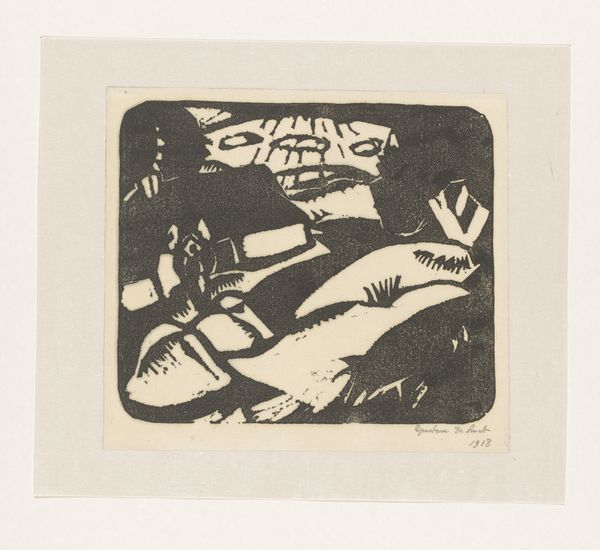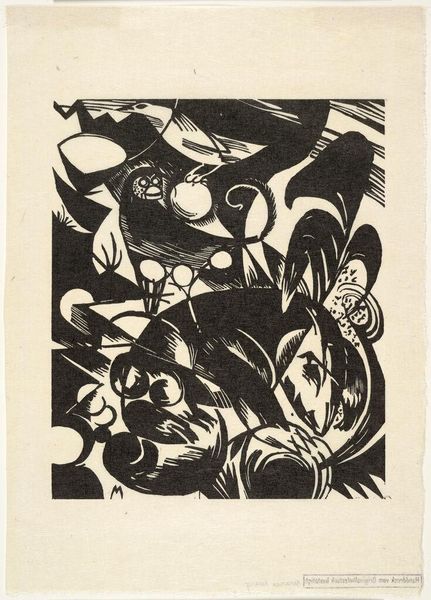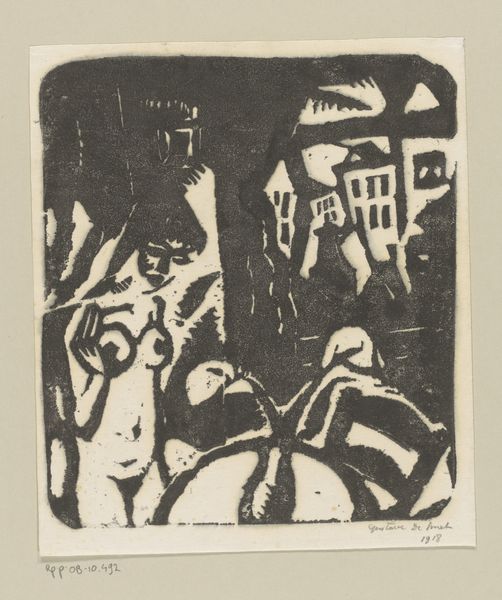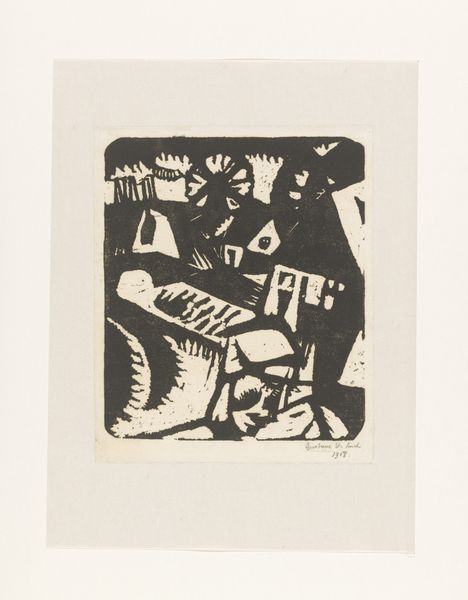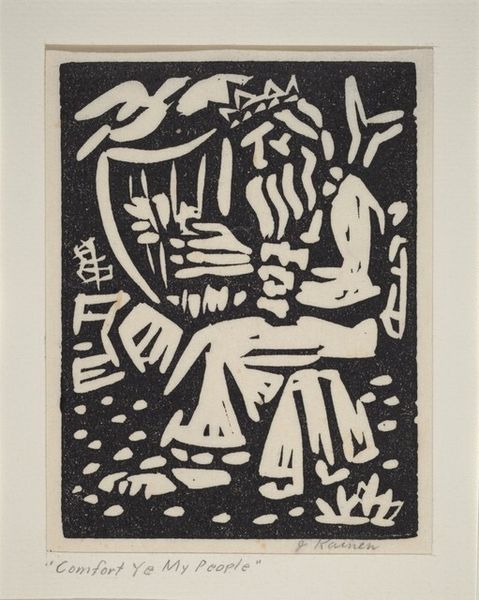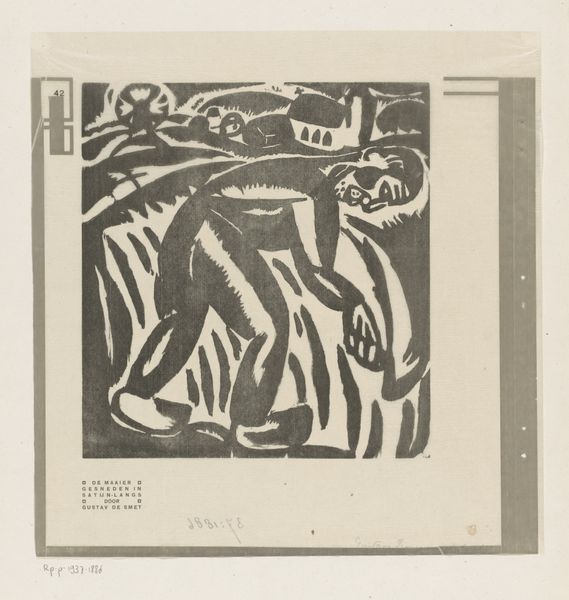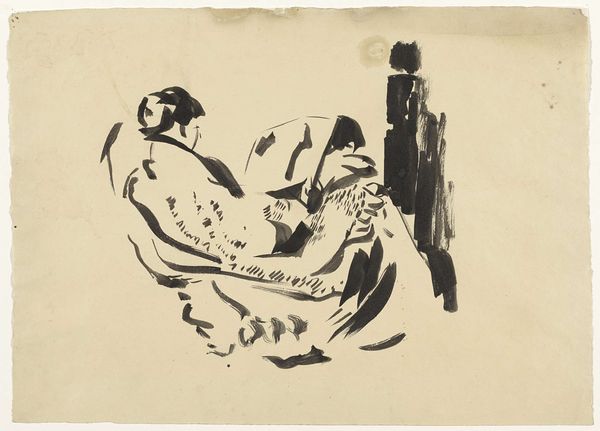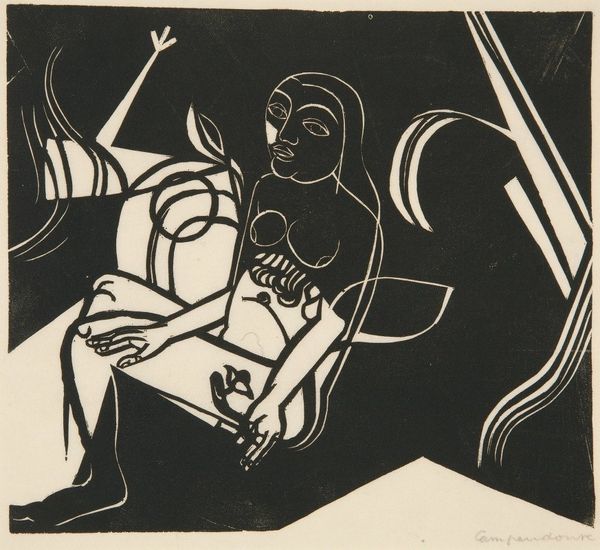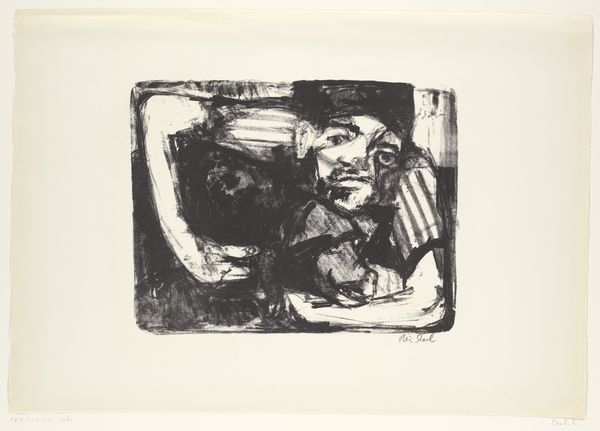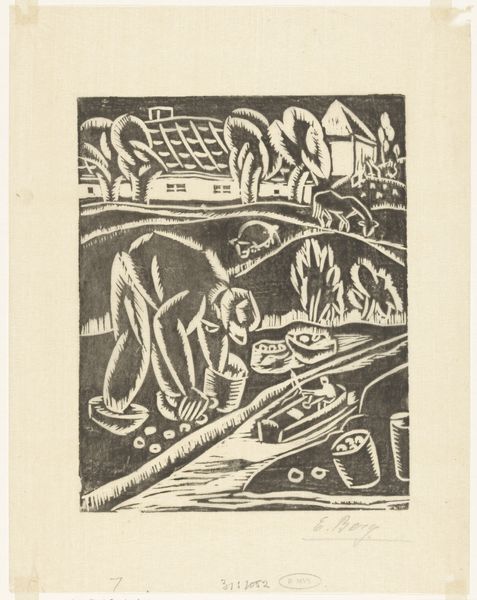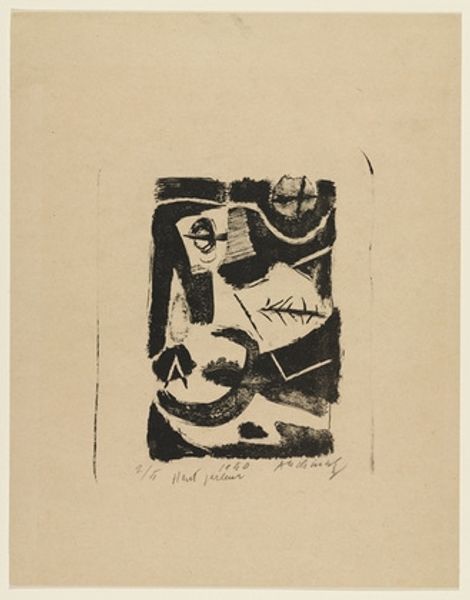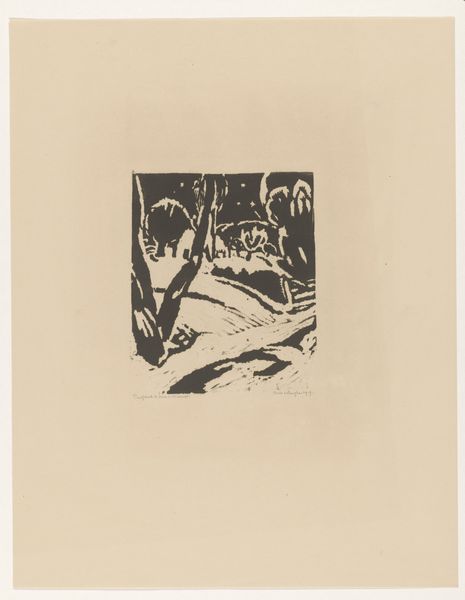
print, woodcut
# print
#
german-expressionism
#
figuration
#
expressionism
#
woodcut
#
nude
Dimensions: 9 7/16 × 11 7/8 in. (23.97 × 30.16 cm) (image)11 11/16 × 15 1/8 in. (29.69 × 38.42 cm) (sheet)
Copyright: No Copyright - United States
Curator: My immediate reaction is this feels both raw and ancient, like something unearthed from a long-lost civilization. Editor: And indeed, it possesses a timeless quality. We’re looking at “Mann und Weibchen,” or “Man and Woman” by Emil Nolde, created in 1912. It’s a woodcut, placing it firmly within the German Expressionist movement. It currently resides in the collection of the Minneapolis Institute of Art. Curator: The stark contrast really draws the eye. The deep blacks create such bold figures against the bright background—makes them feel monumental. Editor: Absolutely. Nolde's involvement with Die Brücke—"The Bridge"—underscores the socio-political aspect, especially given their emphasis on primitivism and questioning bourgeois norms. This print exhibits how those notions can permeate art and its reception. It seems less about romanticizing indigeneity, and more using it as an aesthetic approach. Curator: It's true that Nolde was drawn to the art of non-European cultures, wasn’t he? There’s a clear visual connection to Oceanic and African art in the simplification of the figures, in their blocky forms. I wonder about Nolde’s personal psychology though. Are the formal strategies he employed purely about primitivism, or something else, related to inner experience and trauma? The nude bodies, rendered in such a way, certainly hold a strange fascination. Editor: And how might that influence contemporary understanding? Museums have had to reconcile with past acquisitions as well as how they publicly shape or reshape meaning with visual artifacts. Curator: Thinking about the starry background as an inner cosmos brings forward different associations—longing for a connection beyond our immediate world, perhaps. The woodcut itself mimics something tribal, like carving memories into raw materiality. Editor: It’s definitely thought-provoking to view how a print such as this embodies, and refracts, many political sentiments from its era. Curator: Precisely, and our dialogue hopefully illuminates how images carry an accumulative cultural, psychological, and political significance over the years. Editor: Indeed, providing context and a deeper resonance when experiencing Nolde’s stark woodcut in the gallery.
Comments
minneapolisinstituteofart over 1 year ago
⋮
In this bold image, Expressionist Emil Nolde melds technique and subject as a means to escape the stifling regimentation Imperial Germany. Like several other artists of his time, his search for purity led him to so-called primitive cultures, here represented by two figures half-clothed in boldly-patterned cloth seated beneath a starry sky. Rather than carving supple lines, as he had been trained to do in his youth, Nolde hacked at the woodblock to give the image an uncivilized feel. This work thus taps into many issues currently debated in the art world: What is the role of exoticism' Who gets to work in what style to tell whose story' What is the role and limitation of the stereotype' How do we of the present deal with the art of the past'
Join the conversation
Join millions of artists and users on Artera today and experience the ultimate creative platform.
